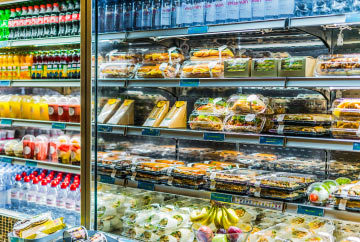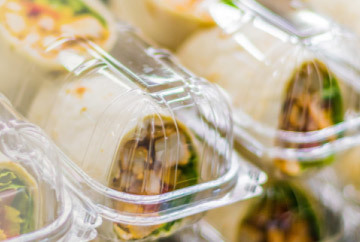If the last two years have taught food & beverage companies anything, it had to be prioritizing agility and resilience. COVID-19 pandemic has been a great leveler for every industry vertical. Food & beverages is one such industry that has witnessed one of the most significant upheavals during COVID-19 times. With it being under the essentials category, the onus of getting products to the customers amid the prevailing challenges took a toll on the companies. While they rejigged the delivery mechanism to drive sales, what came to the rescue in a big way was the interception of technology at every single node, be it the raw material sourcing, inventory management, last-mile delivery, or managing omnichannel platforms. The pandemic has also brought technology at the forefront to deliver goods to consumers during such challenging times. Let's understand what transpired during these past 24 months and how the scenario is slated to shape up as we move ahead.
Tracking F&B Trends
As mentioned earlier, digital adoption has seen a significant uptick during this time, driven by changes in consumer habits. Be it food delivery Apps, online grocery delivery, or BOPIS (Buy Online Pick Up In-Store model), consumers were forthright in trying newer avenues that deliver the goods faster. The long queue at the supermarkets shoved consumers away, and the place was happily captured by online platforms in all the formats, be it groceries, food delivery, or even medicines. What drove this stupendous growth were factors such as contactless ordering, payments, and deliveries, which are fast becoming new trends in the F&B industry, especially in the B2C segment of the supply chain.
Shifting gears from in-person buying to e-commerce
While grocery purchases have taken the lead role, consumers also changed their shopping behavior. Foot traffic plunged as the public no longer felt safe browsing shelves and lingering in aisles. In response, online grocery sales surged to an astonishing 300% early in the pandemic. Although the growth might fizzle out a bit on the other side of the pandemic once consumers return to in-person shopping, the change would undoubtedly be a lasting shift in online ordering. The current estimates predict e-commerce to grow at about 21% of total grocery sales by 2025. Maintaining efficiency in the traditional business model is equally imperative, which is where a uniform product suite across business lines helps achieve the objectives. This is where the omnichannel format is the right fit for companies to adapt and grow.
Forward-looking companies are fast shifting their focus on the 'digital shelf' to make their products visible online when shoppers make buying decisions from their favorite retailers. Some companies have even ventured into the 'direct-to-consumer' (DTC) format in this uncertain environment to create a direct relationship with their customers, rather than relying on retailers and other middlemen. Nestlé, for instance, has acquired a majority stake in the healthy recipe box and prepared frozen meals company, Mindful Chef to strengthen its food and direct-to-consumer offerings in the UK and Ireland.
Imposed new hazard controls
Food safety remains a vital part of F&B companies' everyday operations. The Centers for Disease Control and Prevention had already reported long back that there is a very low risk of contracting COVID-19 from food and packaging or treated drinking water. Safety remains a top priority for F&B businesses operating during the pandemic, and there are still many food-borne health risks that need immediate attention. Due to the onset of COVID-19, food safety observance and enforcement have been at their peak. As a matter of fact, various Food Safety Authorities have been continually monitoring scientific literature about the possible role of food in the transmission of SARS-CoV-2, altering guidelines and imposing newer rules and regulations. e.g., EFSA (European Food Safety Authority) opinions that there is no evidence that the food is a source or transmission route of SARS-CoV-2; however, advises applying disinfectant procedures (62–71% ethanol, 0.5% hydrogen peroxide, or 0.1% sodium hypochlorite for one minute exposure time). Additionally, consumers prefer to choose locally made products over imported products and are being cautious of Country of Origins. Moreover, the pandemic has fast-tracked the demand for healthy & sustainable food products, a trend that could have taken years has become a reality today as people have become more health-conscious due to the COVID-19 pandemic.




